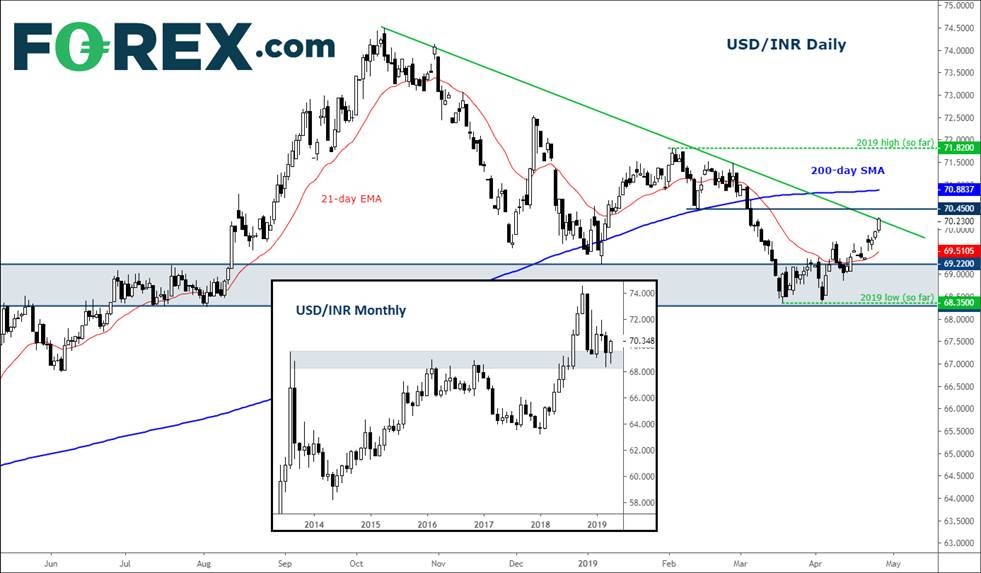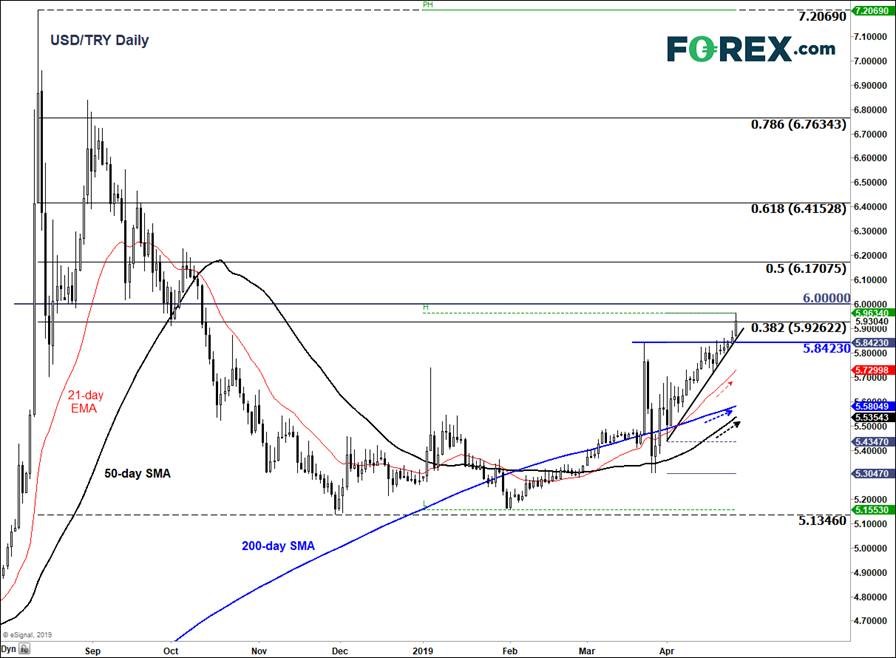Weakness in emerging market currencies vs. the dollar could challenge U.S. equities, writes Fawad Razaqzada.
On March 19 the Indian rupee hit a major resistance area against the US dollar. As it turned out, that happened to be the rupee’s high of the year so far.
As the rupee weakened, The USD/INR has pushed higher over the past few weeks and is now threatening to break its corrective bearish trend line, potentially resuming its long-term rally.
Today, the Indian Rupee has weakened below the Rupee70 per dollar mark, hit in part by the rallying crude prices, with the nation being a large oil importer.
Both major oil contracts have hit new highs on the year this week, with Brent touching $75.50 a barrel today for the first time since Oct. 31. It comes after the United States decided to end sanction waivers for countries that import Iranian oil, which includes India - a nation that is heavily dependent on imports, particularly from Iran.
Also hurting the Indian Rupee is the fact that the nation’s central bank has adopted a dovish monetary policy stance, cutting interest rates twice this year.
Externally, additional pressure is being exerted on the rupee by a stronger US dollar, with the U.S. Dollar Index breaking out of its prior range this week.
Other emerging market currencies are also coming under pressure, with the likes of the Turkish lira, Polish zloty and Argentina peso looking particularly vulnerable. If emerging market currencies continue to weaken, then this could have ramifications for the wider markets, which could affect the rally in U.S. equities after some of the major U.S. indices broke to fresh highs this week.

Turkish Lira Follows Suit
The Turkish lira has just dropped 1% on the back of the latest announcement by the Turkish Central Bank. The Turk bank has removed a key line from its statement that pledged further tightening will be delivered. Instead, the central bank merely pledged to maintain a tight policy. So, it hasn’t completely ruled out rate hikes, but the omission of the key statement has done the damage for now and the Turkish lira has fallen sharply.
The statement noted: “Developments in domestic demand conditions have led to some improvement in inflation indicators. Yet, higher food and import prices and the elevated course of inflation expectations point to continued risks to price stability. Accordingly, the Committee has decided to maintain the tight monetary policy stance until inflation outlook displays a significant improvement.”
Our followers should not be surprised by the latest weakness in lira. We highlighted last week that the USD/TRY could pop higher this week. The fact that rates have now pushed higher, the path of least resistance clearly remains to the upside and more pain could be on the way for Turkish citizens unfortunately.

Source: TradingView and FOREX.com.


















